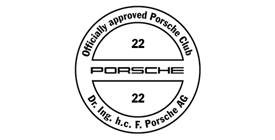So my car is running on battery volts only, there is no change in voltage when the engine goes from running to stopped and the battery eventually goes flat. Is there anything except the alternator that could cause this. I do have an untested one but I fitted it an it made no difference, this obviously doesn't say much as I have no idea if it worked in the first place.
You are using an out of date browser. It may not display this or other websites correctly.
You should upgrade or use an alternative browser.
You should upgrade or use an alternative browser.
No Charging Volts
- Thread starter barks944
- Start date
Not a lot of choice!
Alternator have brushes, most of which come out of the unit with the rectifier, its worth checking those, as the bit is a lot cheaper than the alternator.
Mike
Alternator have brushes, most of which come out of the unit with the rectifier, its worth checking those, as the bit is a lot cheaper than the alternator.
Mike
Early cars certainly dont have a fuse in the charging circuit, not sure about Turbos
Is the tacho working? I thimk it needs to sense a minimum revs before charging, but otherwise there is not much to the charging bits.
Mike
Is the tacho working? I thimk it needs to sense a minimum revs before charging, but otherwise there is not much to the charging bits.
Mike
robwright
New member
Just been checking the wiring diagrams for this. It appears there isn't a charging fuse. You don't need to put a meter on the battery mate. That's the beauty of a car with a proper voltmeter in the dash. If it is reading 12V and no more when running then dropping then I would suspect the alternator or anything inbetween i.e. wiring. In my experience probably the rectifier in the alternator but it's all internal.
Rectifier is in unit with the brushes - at least on the 2 (different) ones I've played with. I did find the spares I wanted were still listed but in the end I didn't need them.
Mike
Mike
Don't know - but my original and the one on my replacement engine (oval dash) both have brushesmounted on a plate retained by one screw.
Mike
edit The plate has diodes (I assumed) and as the brushes had almost worn out on one I swapped them as the older alternator wouldn't fit the later engine - belts didn't line up
Mike
edit The plate has diodes (I assumed) and as the brushes had almost worn out on one I swapped them as the older alternator wouldn't fit the later engine - belts didn't line up
I'll have a look at my spare tomorrow - if its not got them I wonder what kit I'm thinking of? Lawn mower ot something!
Mike
Mike
Its definately not charging and the car is a 1984 lux not the turbo mentioned in my sig. The brushes are on the voltage rectifier/regulator unit that is attached to the back of the alternator. I guess the current is generated in the rotor which is why the rectifier has brushes to connect it to the spinning rotor.
I can't get at my shelves to check mine -lots stuff in the way and bad back!- but if I remember correctly brushes start about 20+mm long but 1 of mine was down to 3-4mm and I was getting very low volts- 6 or 7 IRC.
Mike
Mike
robwright
New member
Sounds as though it's all part of the rectifier assembly. I imagine the recifier can only be purchased as a complete part. In my experience it is generally the rectifiers that go. They are only diodes after all. As long as the alternator windings haven't 'Birds Nested' they should probably be ok. I would seriously try and get a rectifier.
vince944red
New member
Alternators do not have brushes.
They do have a slip ring.
Many people think the slip ring ( carbon stick on a spring running on a rotaing contact) is a brush - it is but it does not run across a segmented commutator which wears brushes down so has a much longer life.
If the slip rings carbon brush is dead or the rotating contact is badly worn that could cause problems but rectifiers - diodes are much more likely
They do have a slip ring.
Many people think the slip ring ( carbon stick on a spring running on a rotaing contact) is a brush - it is but it does not run across a segmented commutator which wears brushes down so has a much longer life.
If the slip rings carbon brush is dead or the rotating contact is badly worn that could cause problems but rectifiers - diodes are much more likely
robwright
New member
ORIGINAL: vince944red
Alternators do not have brushes.
They do have a slip ring.
Many people think the slip ring ( carbon stick on a spring running on a rotaing contact) is a brush - it is but it does not run across a segmented commutator which wears brushes down so has a much longer life.
If the slip rings carbon brush is dead or the rotating contact is badly worn that could cause problems but rectifiers - diodes are much more likely
Thankyou mate a I was trying to explain last night alternators that are not self excited have to be supplied with DC field current. This is usually achieved by means of a brush and a slip ring and not a commutator as you just explained. The brush will wear though as electron flow will will transfer carbon from the brush to lubricate the slip ring. I do agree though that this is far less than a brush running against a segmented commutator.
Wasn't sure what the sprung carbon rods were acting on, but they look like brushes! (and at least my memory is ok!)
Had a look at exploded view and understand how they work - its good to learn!
Cheers
Mike
PS - glad problem is being solved
Had a look at exploded view and understand how they work - its good to learn!
Cheers
Mike
PS - glad problem is being solved

Posts made and opinions expressed are those of the individual forum members
Use of the Forum is subject to the Terms and Conditions
Disclaimer
The opinions expressed on this site are not necessarily those of the Club, who shall have no liability in respect of them or the accuracy of the content. The Club assumes no responsibility for any effects arising from errors or omissions.
Porsche Club Great Britain gives no warranties, guarantees or assurances and makes no representations or recommendations regarding any goods or services advertised on this site. It is the responsibility of visitors to satisfy themselves that goods and/or services supplied by any advertiser are bona fide and in no instance can the Porsche Club Great Britain be held responsible.
When responding to advertisements please ensure that you satisfy yourself of any applicable call charges on numbers not prefixed by usual "landline" STD Codes. Information can be obtained from the operator or the white pages. Before giving out ANY information regarding cars, or any other items for sale, please satisfy yourself that any potential purchaser is bona fide.
Directors of the Board of Porsche Club GB, Club Office Staff, Register Secretaries and Regional Organisers are often requested by Club members to provide information on matters connected with their cars and other matters referred to in the Club Rules. Such information, advice and assistance provided by such persons is given in good faith and is based on the personal experience and knowledge of the individual concerned.
Neither Porsche Club GB, nor any of the aforementioned, shall be under any liability in respect of any such information, advice or assistance given to members. Members are advised to consult qualified specialists for information, advice and assistance on matters connected with their cars at all times.








